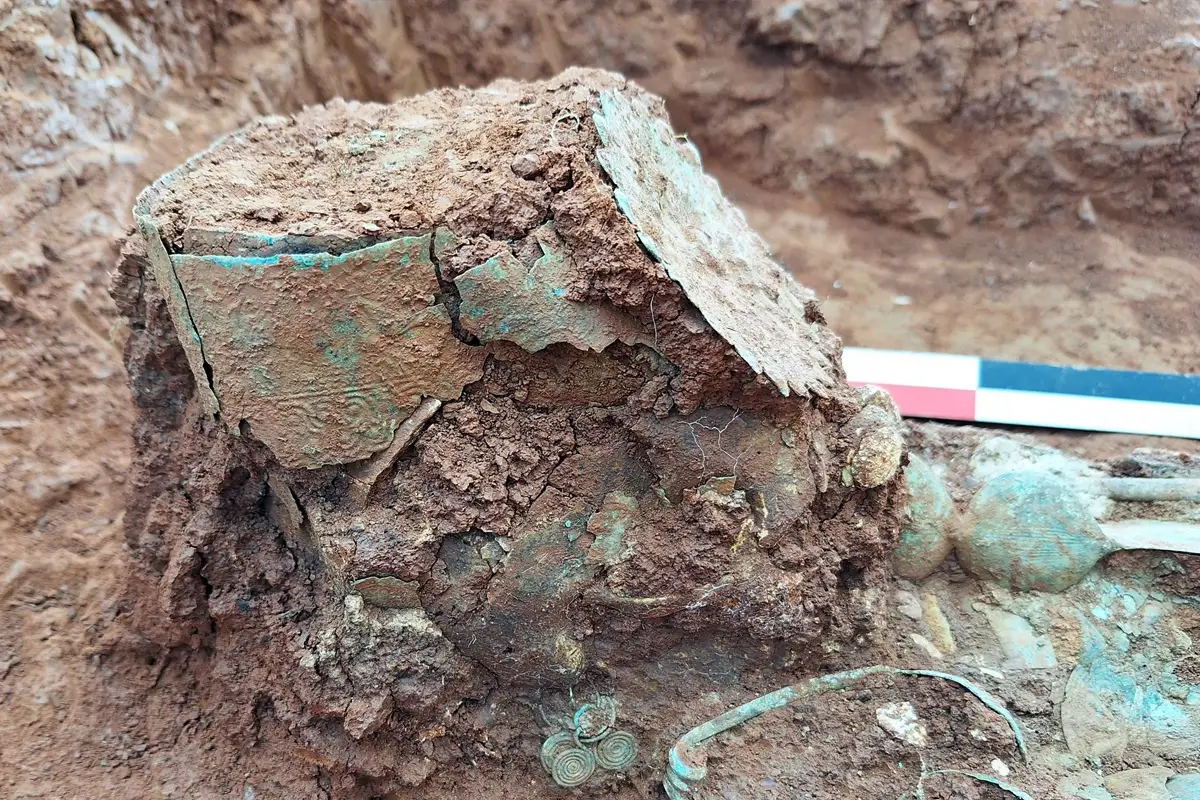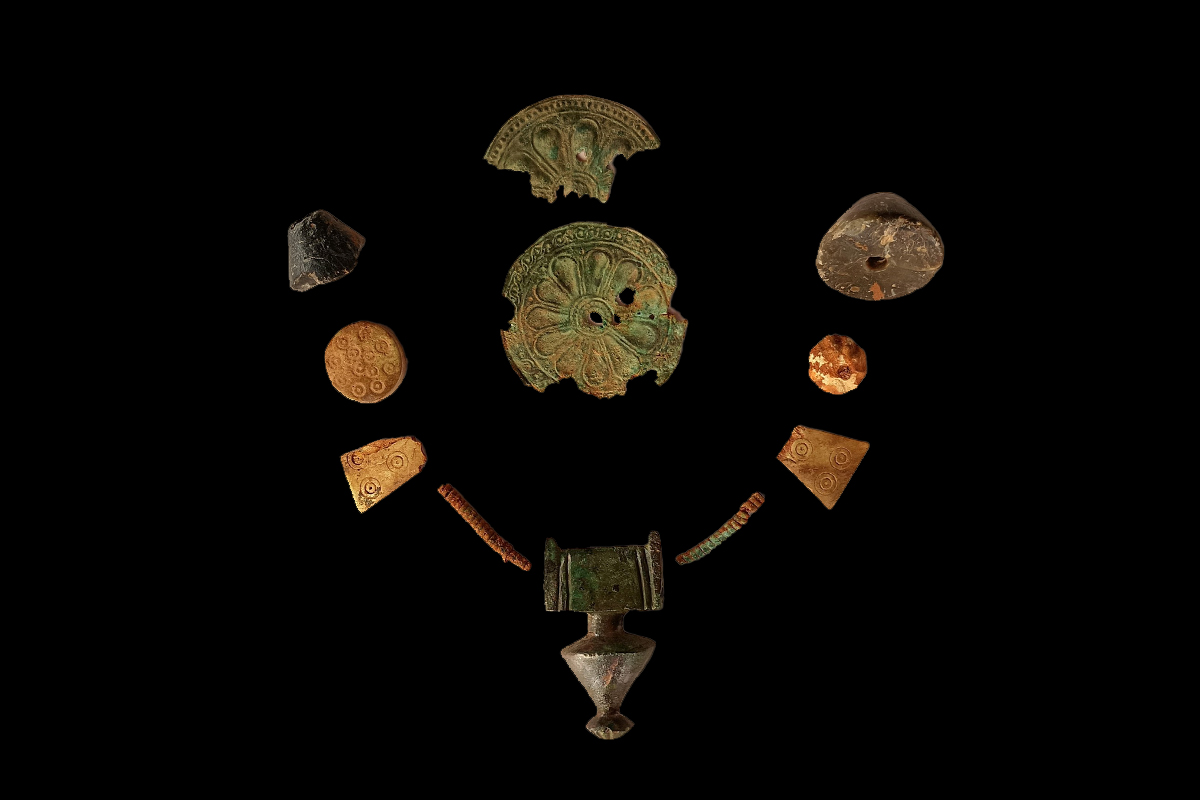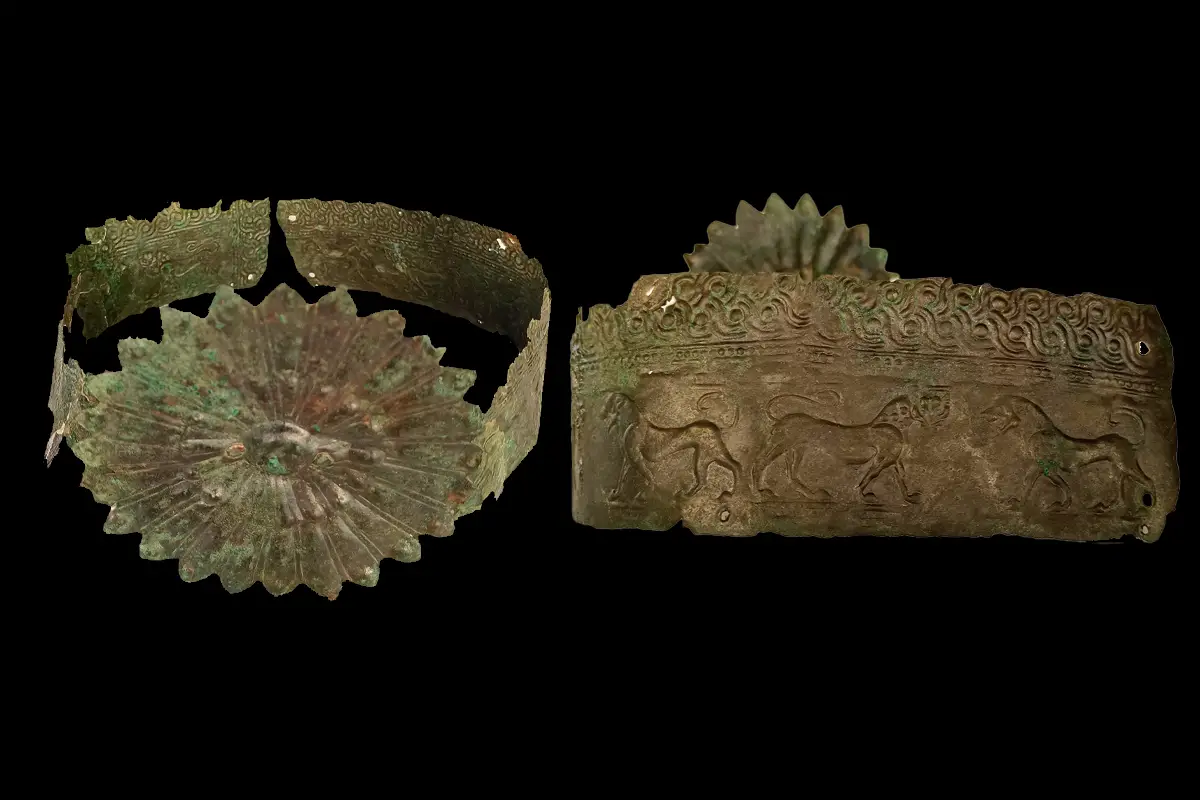Excavations by the Ephorate of Antiquities of Phthiotis and Evrytania have made the remarkable discovery of an Archaic-Era tomb containing the remains of a woman buried with an elaborate bronze diadem.
Situated north of the Sanctuary of Apollo Ptoos and ancient Akraiphia, the burial was found on land being developed for a photovoltaic installation near Lake Kifisida.
Archaeologists unearthed a cemetery dating to the Archaic and Classical periods, along with the architectural remains of a fortified settlement from the same era.
Known from historical maps as “Spitia–Katavothra,” the cemetery is arranged in clusters and includes pit graves, burial pyres, and tiled-roofed tombs. While investigations are still ongoing, the forty graves examined so far demonstrate the high social standing and affluence of the local landowning population.
One notable burial, so-called the “Lady with the Inverted Diadem”, contains the remains of a young noblewoman estimated to have been between 20 and 30 years old at the time of her death. Her body was found with an elaborate bronze diadem, carefully placed on her head as a symbol of status and authority.
The diadem features embossed decoration, including a central rosette shaped like the sun and facing pairs of heraldic lions (traditional emblems of royal power). Notably, the diadem was found placed upside down, with the lions positioned supine and the battle ornament at the bottom.
Experts place the burial to the latter half of the 7th century BC at a time when hereditary kingship gave way to aristocratic rule and the rise of oligarchy in many Greek city-states.

The noblewoman’s wealth is further presented by an assemblage of luxury grave goods, including two oversized Boeotian-type buckles with geometric horse motifs, a large vase-shaped pendant (periaptos), beads made of bone, ivory, and amber, laminated rosettes, copper earrings, a bracelet (psellia), and spiral rings worn on every finger joint.
Nearby, another burial of a young woman was found along with a bronze diadem adorned with rosettes and jewellery similar in style to that of the noblewoman.
Header Image Credit : Ministry of Culture
Sources : Ministry of Culture





